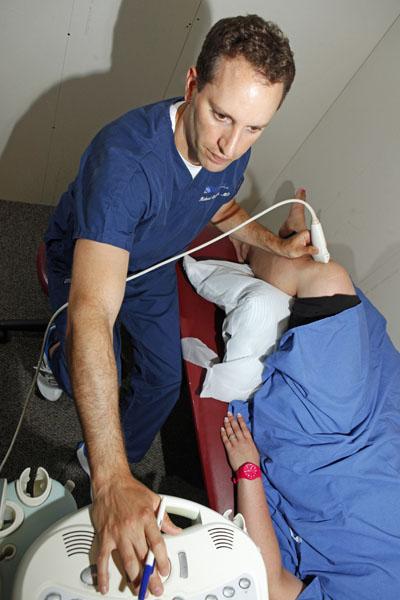Electromyogram (EMG)
The EMG is a diagnostic tool used to test electrical impulses transmitted between the muscles and adjoining nerves and consists of:
- Needle EMG – small Teflon coated needle is used to test muscles
- Nerve Conduction Study - mild electrical stimulation to detect various nerve conditions such as:
- Neuropathy
- Nerve injuries
- Entrapment syndromes such as Carpel Tunnel
- Muscle inflammation
- Pinched nerves
- Peripheral nerve damage
- Disc herniation
- Amyotrophic lateral sclerosis (ALS)
- Muscular dystrophy
- Myasthenia gravis and others
Ultrasound
Buffalo Spine and Sports Medicine was the first group in Buffalo to introduce ultrasound for the evaluation and management of joint and soft tissue and nerve disorders. It complements and allows for more accurate diagnosis and safer procedures.
- Direct external trauma
- Acute lesions - strains, contusions/crush injury, muscle ruptures (common in athletics)
- Chronic lesions - fibrous scars, cystic hematomas, myositis ossificans
- Neuromuscular pathologies - progressive dystrophies, myotonic dystrophies, inflammatory myopathies spinal muscular atrophy (multifidus)
- Inflammatory and degenerative arthritis - RA, DJD
- Peripheral neuropathies - carpal/tarsal tunnel

